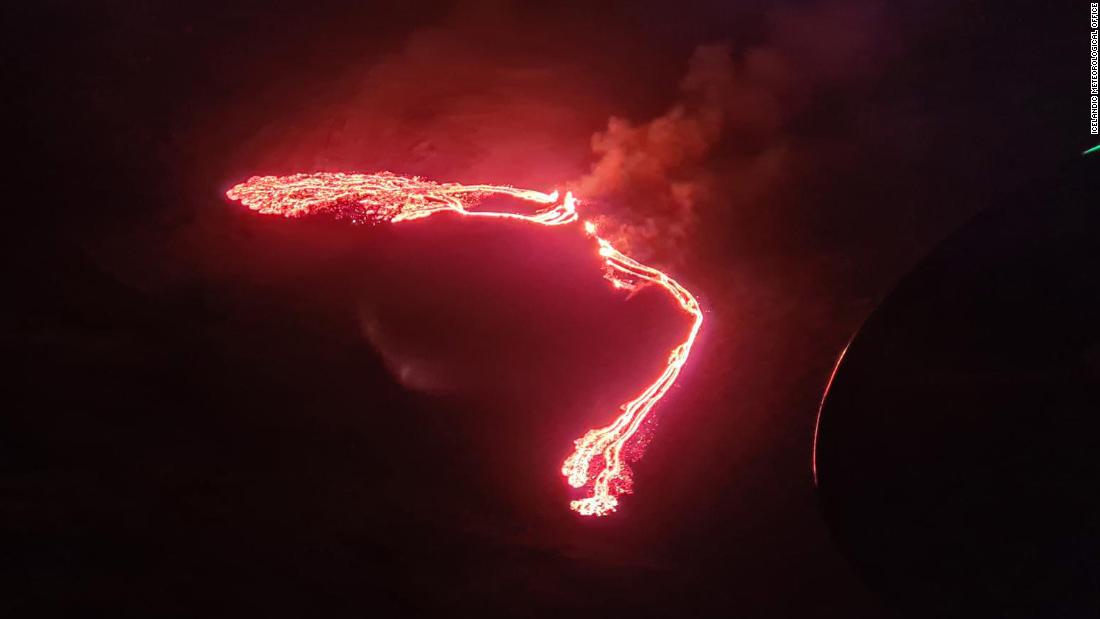
The current eruption is “minor” and “volcanic activity” has “decreased somewhat” in the area, the agency said on Twitter. The erupting fissure is about 500-700 meters long, according to the IMO, and the lava area covers less than a square kilometer.
Despite this reduced activity, the lava flows are still a “local hazard,” according to the IMO.
“Gas contamination is not expected to cause much discomfort to humans, except close to the source of the eruption,” added a further tweet.
The IMO continues to monitor gas emissions after Friday’s spectacular eruption, which led authorities to divert civilians away from the major Reykjanesbraut highway.
Concerns were raised about the volcano’s proximity to the country’s main airport, Keflavik International Airport, which is just a 25-minute drive from the peninsula.
The aviation color code for the airport was lowered from red to orange on Saturday due to predictions of minimal ash fall by the IMO.
Iceland’s Ministry of Civil Protection and Disaster Response on Friday night advised that people within miles of the volcano close their windows and stay indoors to avoid the effects of volcanic gas in the air.
“Volcanic gas pollution is expected to extend to Þorlákshöfn and continue into the night. People are being asked to close windows and stay indoors. The status and amount of SO2 emissions from the eruption are being assessed,” the agency tweeted late Friday.
“This is slightly less seismic activity compared to earlier mornings, where the number of earthquakes was around 1,000,” the IMO added in a tweet on Thursday.